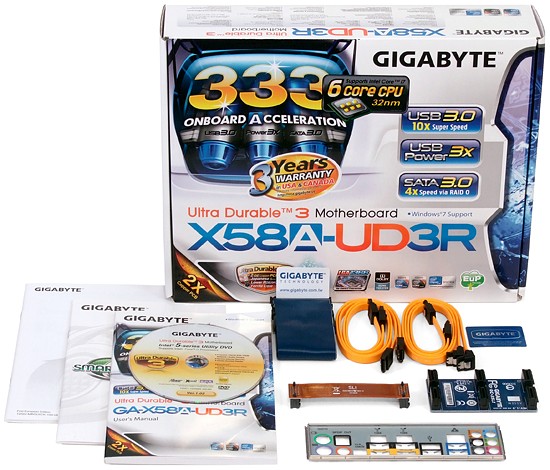X58 In 2010: Four LGA 1366 Boards With USB 3.0 And SATA 6Gb/s
The March 2010 launch of Intel's hexa-core Core i7-980X gave us a good reason to revisit the LGA 1366 interface. Today, we're looking at four new X58 Express-based motherboards that tie USB 3.0 and SATA 6Gb/s support in to Intel's flagship platform.
Gigabyte GA-X58A-UD3R
The least-expensive of Gigabyte’s USB 3.0-equipped X58A-series, the $200 X58A-UD3R packs enough features to compete with high-end parts, while stealing thunder from its low-cost rivals.
This is, for example, the only sub-$300 board in today’s roundup to use a separate controller for eSATA, freeing up two rear-panel ports where competitors have either a single shared port (ASRock) or none whatsoever (Asus). Yet that controller is just one of three that double the number of SATA drives supported.
Perhaps the X58A-UD3R’s biggest advantage over similarly-priced competitors is its two sets of automatic PCIe lane switches that allow the board to change from dual x16 to quad x8 transfer mode whenever cards are detected in the second and fourth blue slots. But while pathway redirection could allow up to four high-end graphics cards to operate at near-peak performance, slot spacing prevents more than three double-slot cards from being inserted.
Unfortunately, Gigabyte didn’t implement a workaround for the issue we found Asus' competing model. Placing three double-slot graphics card on either product results in the third card hanging a full space beneath the motherboard’s bottom edge. Proper support for that third card consequently requires an eight-slot case, whereas the ATX standard only accounts for seven. While high-end office users might view the X58A-UD3R’s quad-graphics-card ability as the ultimate in multi-monitor display support, gamers are probably better-off using two dual-GPU cards to achieve the best performance possible.
Other layout snags that will affect only a small minority of builders are a floppy header located near the back of the X58A-UD3R’s bottom edge and an Ultra ATA connector also near the front of the bottom edge. Anyone who needs a floppy drive for such ancient tasks as installing Windows XP with AHCI drivers will note that, while long floppy cables do exist, they aren’t exactly pretty. Ultra ATA cables, being far shorter, can become a far greater installation issue for anyone who wants to keep an old optical drive.
Marvell’s 88SE9128 provides the two SATA 6Gb/s ports via a single 5.0 Gb/s PCIe 2.0 interface. These are given the same white color code as the JMB363-controlled SATA 3Gb/s ports next to them, forcing builders to pay careful attention to the labels if they want to be certain their modern drives are plugged into the faster interface. Both controllers also support Ultra ATA, but Gigabyte chose a JMicron part for the X58A-UD3R’s single interface connector.
A full seven expansion slots marks the final “features for the money” triumph for Gigabyte’s X58A-UD3R, but heat sink placement limits the top slot’s card length to a maximum of 3.125”. Though this sounds rather restrictive, we have found several expansion cards that fit.
Get Tom's Hardware's best news and in-depth reviews, straight to your inbox.
BIOS Features
Gigabyte’s well-designed MB Intelligent Tweaker menu hasn’t changed much over the past two or three product generations, as there’s little room for improvement. Primary clock controls and ratio are found at the top of its main menu, while primary voltage controls are farther down the page.
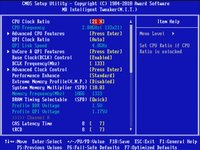
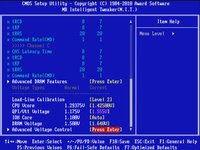
Various submenus bring up advanced CPU and clock settings

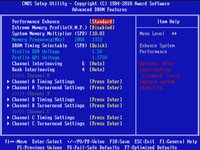
The Advanced DRAM Features menu allows timing adjustments beyond those available in the main menu. Users who would like to access these advanced controls but still keep the timings for all channels grouped together should choose “Quick” mode.
We again see the basic four timing controls at the top of the advanced menu, followed by most of the other memory timings experienced tuners occasionally need.

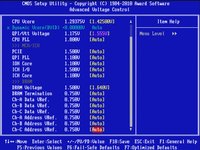
Advanced Voltage Control is also found on a submenu, providing such intricacies as DRAM reference and termination voltage.


Up to eight custom BIOS configurations can be set as user profiles and the motherboard automatically saves three more, just in case an overclocker would like to return to a recent unsaved setting.
Accessories
Gigabyte’s installation kit is on-par with Asus', with the addition of two feature guides and an Ultra ATA ribbon.
-
Tindytim First Intel punishes me by not releasing a proper 32nm 920 replacement for the 1366, and then Tom's publishes this article only days after I purchase components for yet another 1366 build.Reply
I must be a BYOPC masochist. -
Stardude82 Nice to see that mobo makers aren't charging too much of a premium for USB 3.0 and SATA-6. On the other hand, what an embarrassing for ASRock just as I thought they were getting out the shadow of ASUS.Reply
I would have liked to see those new ports put to use on these boards... -
omoronovo I very recently decided to take the plunge in an i7-based build, and I chose the UD3R for it. I couldn't be happier - this little monster pushes my i7 to 4ghz stable on stock vcore.Reply
One thing I haven't seen anywhere though, but would like to, is the overclocking variance added through differing ram capacities. Even though I reached 4ghz on stock vcore, I had to push my QPI to 1.35 to keep the system stable with 6 modules installed. With 4 modules, this was reduced to 1.28, and with 3 it was around 1.24 and with only 2 I could run the QPI volts at 1.2.
Perhaps an idea for an in-depth article at some point in the future Toms? -
liquidsnake718 Thank you TS. I think you may have built and benched my new computer. I see you still chose the 920 over the 930. Even before reading this article, I had my eyes on the UD3R because of the price and the decent features, save the sound card. However because of this article, I am going to reserve this mb and start building a newbie!Reply
The next step would be to see how these boards stack up using 6 cores and letting people know what power with 6 cores means using a 1 & a half year old motherboard. Although knowing that 6 cores, USB3.0 and SATA 6.0gb are a long way from being standard, it is by no means premature to have this board as one knows that they will be paying and buying for the long haul! The smartest ones do, and seeing as you guys chose the best parts for the price in terms of quality/performance, the UD3 is a perfect fit for a 5850 or maybe 2!
You should send this article to someone at Intel and maybe they will want to soon follow the way of USB3.0 for their vanilla board! I guess these builds are the new standard for high end or borderline excellent.
-
anders_w An error/typo in the table page 2?Reply
http://www.tomshardware.com/reviews/x58-usb-3.0-sata-6-gbps,2614-2.html
The table claims Asus P6X58D-E have Chipset S-ata 6 x SATA 6.0 Gb/s
Should probably be 6 x SATA 3.0 Gb/s... -
Crashman anders_wAn error/typo in the table page 2?http://www.tomshardware.com/review 614-2.htmlThe table claims Asus P6X58D-E have Chipset S-ata 6 x SATA 6.0 Gb/sShould probably be 6 x SATA 3.0 Gb/s...Reply
Thanks. -
C 64 At first quick look at the picture I almost fell from my chair... a quad processor MB, but then I realized Tom had problems squeezing the MBs in the pic.Reply
-
Crashman zipzoomflyhighAnother X58 reviews. Just what we all wanted. NOT.Yeh, X58 is obviously exceeds your needs but there hasn't been much news on the Via Apollo Pro front.Reply -
abhishekk89 i'd been planning on a p55 chipset + i5 750... now i'm thinking of i7 930 + gigabyte ud3rReply


